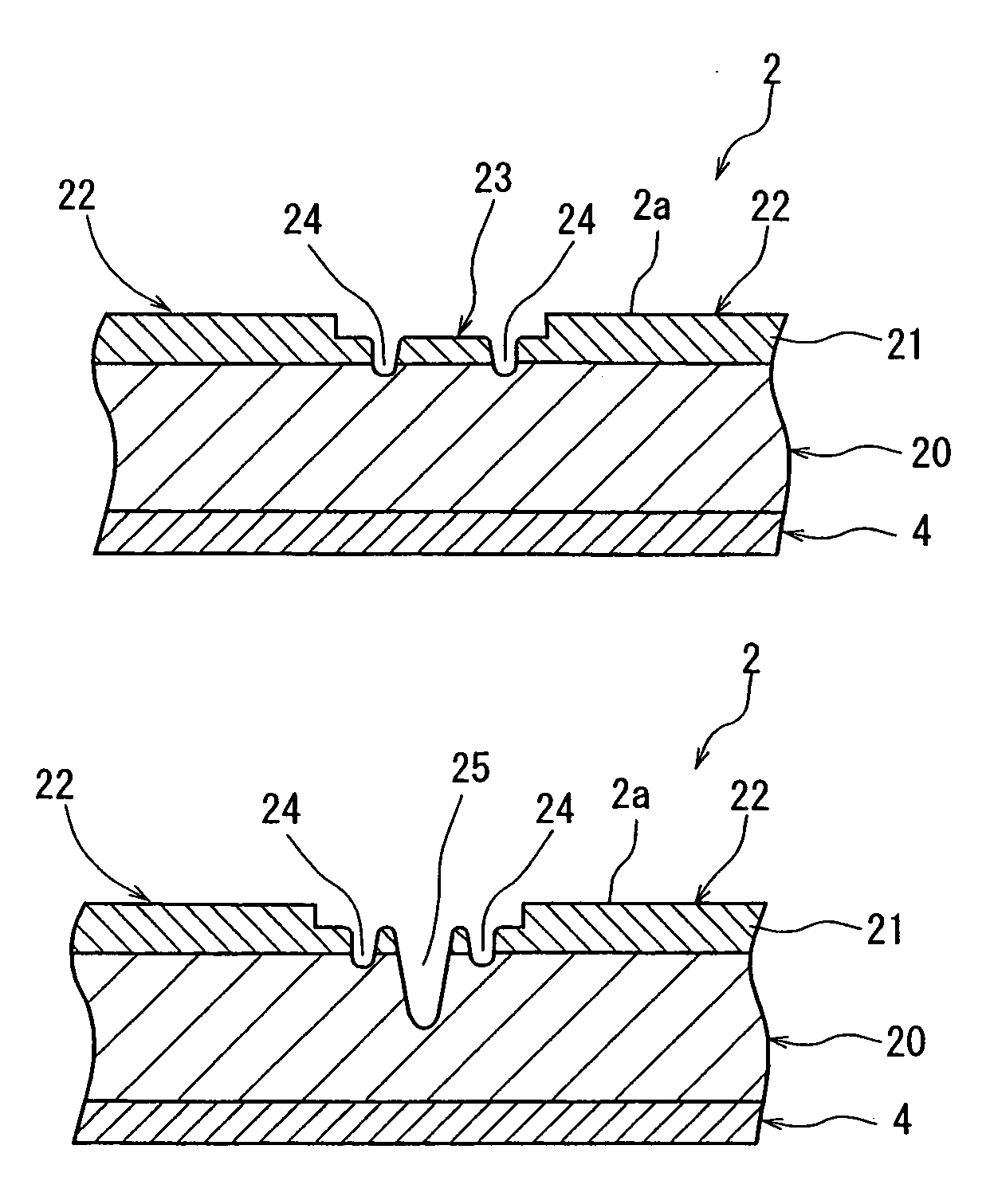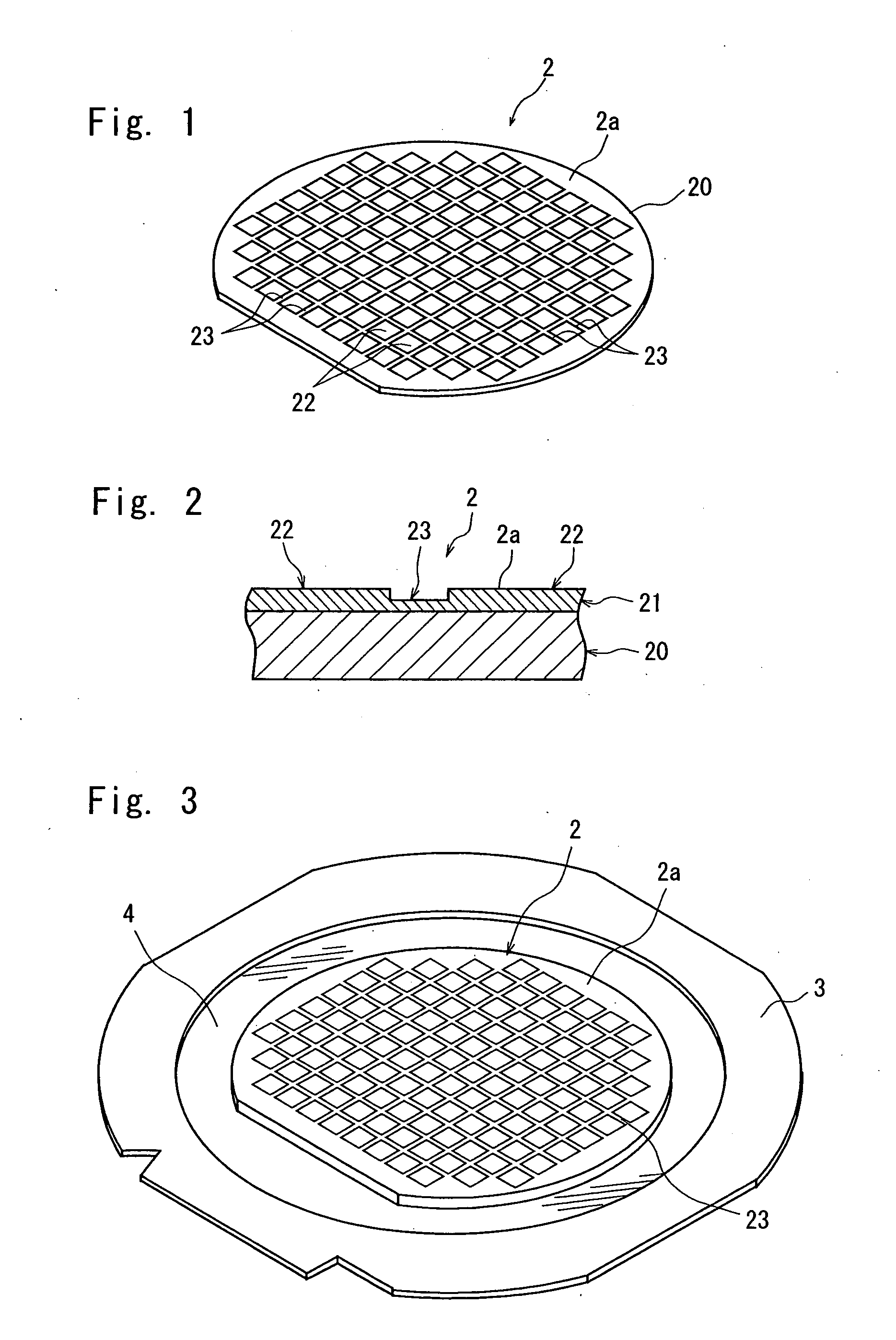Method of laser processing a wafer
a laser processing and wafer technology, applied in the field of laser processing a wafer, can solve the problems of other problems in respect of productivity, damage devices, and problems in manufacturing tools, and achieve the effects of preventing the flaking of a layer
- Summary
- Abstract
- Description
- Claims
- Application Information
AI Technical Summary
Benefits of technology
Problems solved by technology
Method used
Image
Examples
Embodiment Construction
[0023] The wafer laser processing method of the present invention will be described in more detail hereinunder with reference to the accompanying drawings.
[0024]FIG. 1 is a perspective view of an optical device wafer to be divided into individual chips by the wafer laser processing method of the present invention, and FIG. 2 is an enlarged sectional view of the principal portion of the optical device wafer shown in FIG. 1. The optical device wafer 2 shown in FIG. 1 and FIG. 2 has a plurality of devices 22 which are composed of a laminate layer 21 comprising a layer having a wavelength discriminating filter function to transmit only light having a specific wavelength or a specific wavelength range and reflect light having other wavelengths and formed in a matrix on the front surface of a substrate 20 made of quartz, borosilicate glass or the like. The devices 22 are sectioned by streets 23 formed in a lattice pattern. In the illustrated embodiment, laminates forming the laminate lay...
PUM
| Property | Measurement | Unit |
|---|---|---|
| diameter | aaaaa | aaaaa |
| thickness | aaaaa | aaaaa |
| thickness | aaaaa | aaaaa |
Abstract
Description
Claims
Application Information
 Login to View More
Login to View More - R&D
- Intellectual Property
- Life Sciences
- Materials
- Tech Scout
- Unparalleled Data Quality
- Higher Quality Content
- 60% Fewer Hallucinations
Browse by: Latest US Patents, China's latest patents, Technical Efficacy Thesaurus, Application Domain, Technology Topic, Popular Technical Reports.
© 2025 PatSnap. All rights reserved.Legal|Privacy policy|Modern Slavery Act Transparency Statement|Sitemap|About US| Contact US: help@patsnap.com



